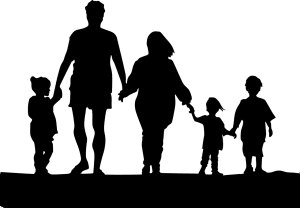How Mental Health Affects Second-Generation Adolescents
The demographics in the United States have shifted significantly. The Pew Research Center reported that there were 44.4 million immigrants living in the country in 2017, making up 13.6% of  the total population. The increase in the immigrant population in the United States also means an increase in second-generation Americans – those who are born in the United States to immigrant parents (some people may also refer to these people as first-generation Americans, however). The number of second-generation immigrants was nearly as much back in 2013 at 36 million, making up 12% of the population.
the total population. The increase in the immigrant population in the United States also means an increase in second-generation Americans – those who are born in the United States to immigrant parents (some people may also refer to these people as first-generation Americans, however). The number of second-generation immigrants was nearly as much back in 2013 at 36 million, making up 12% of the population.
Immigrants bring much of their culture with them when the come to a new country. This is what makes America a melting pot: immigrants bring their food, traditions, and their languages with them, just to name a few things. It’s a way for them to keep their ties to their home country (after all, it’s what they grew up with), but it’s also a way for them to introduce something new to Americans, as well as connecting their children with their home culture.
 Immigrants also bring their cultural norms and beliefs with them too. For example, Asians (one of the largest groups of immigrants) and Asian-American adolescents underutilize mental health services. This has been linked to the strong stigma against mental health that resonates in the Asian community (most Asian immigrant parents interviewed in one study felt that adolescents don’t seek counseling because of the “shame” of having a mental illness and the effect it can have on their education and career).
Immigrants also bring their cultural norms and beliefs with them too. For example, Asians (one of the largest groups of immigrants) and Asian-American adolescents underutilize mental health services. This has been linked to the strong stigma against mental health that resonates in the Asian community (most Asian immigrant parents interviewed in one study felt that adolescents don’t seek counseling because of the “shame” of having a mental illness and the effect it can have on their education and career).
Another study looked into mental health trends in both Asians and Latinx people (the other largest group of American immigrants). While there didn’t seem to be any significant increases in risks or diagnoses among the immigrants themselves, second-generation immigrants were more likely to have higher rates of substance use disorders.
There are several reasons why second-generation Americans have trouble seeking help for their mental health or even identifying it and acknowledging that it’s there in the first place. There’s the cultural clash that can occur with being raised in a culture and environment that’s different than your parents (which is  harder in adolescents where you can feel like you’re constantly questioning your identity), and then there’s also immigrant guilt. This is the feeling that children of immigrants can have where they feel like they have to fight through or ignore their struggles because of the risks and sacrifices their parents made to come here. They may feel like what they’re going through is not as difficult as what their parents went through, or that they have to succeed to prove that their parents’ move was worth making.
harder in adolescents where you can feel like you’re constantly questioning your identity), and then there’s also immigrant guilt. This is the feeling that children of immigrants can have where they feel like they have to fight through or ignore their struggles because of the risks and sacrifices their parents made to come here. They may feel like what they’re going through is not as difficult as what their parents went through, or that they have to succeed to prove that their parents’ move was worth making.
 External barriers also play a role. Second-generation Americans may have difficulty accessing mental health care because of their worry that their clinician won’t understand their culture, the costs of going to treatment, and not having accessible transportation to get there.
External barriers also play a role. Second-generation Americans may have difficulty accessing mental health care because of their worry that their clinician won’t understand their culture, the costs of going to treatment, and not having accessible transportation to get there.
The number of second-generation Americans continues to grow as the country becomes larger and more diverse. It’s necessary to address these barriers and stigma that specifically affects this population as they grow up and not only enter adolescence but navigate their place in adulthood too.
Are you the child of immigrants? How do you think this affects your view on mental health? Do you feel comfortable talking to your parents about what you’re going through? What are their beliefs on mental health?




Recent Comments